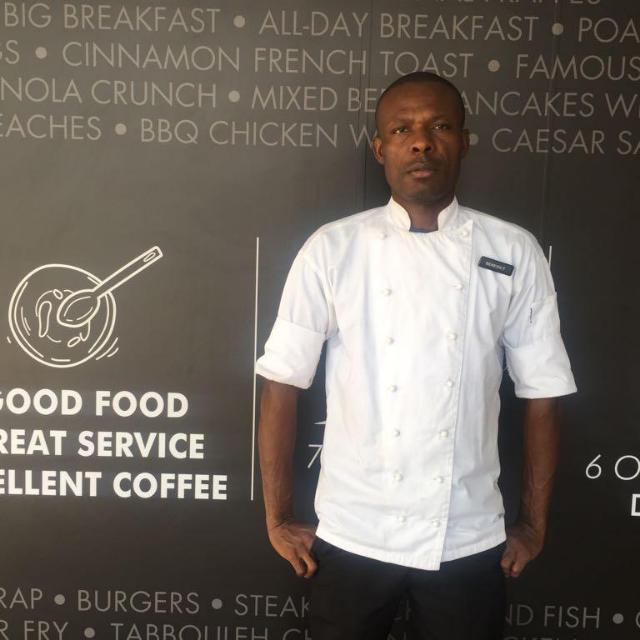
An executive chef
The role of the executive chef has undergone significant transformations over the years. Once primarily focused on cooking and overseeing kitchen operations, the modern executive chef now wears multiple hats, blending culinary expertise with managerial, administrative, and innovative responsibilities.
This article explores the evolution of the executive chef role, highlighting the key changes and the factors driving these shifts.
Introduction
In the past, the executive chef was often seen as the master cook, responsible for creating menus and ensuring food quality.
Today, the role encompasses a broader range of duties that extend beyond the kitchen. The modern executive chef must navigate the complexities of restaurant management, adapt to evolving culinary trends, and embrace technological advancements.
Understanding this evolution is crucial for aspiring chefs and industry professionals.
Key Takeaways
- Expanded Responsibilities: The role now includes management, finance, and marketing.
- Technological Integration: Embracing technology for efficiency and innovation.
- Focus on Sustainability: Leading efforts in sustainable practices and sourcing.
- Enhanced Leadership: Greater emphasis on team management and development.
- Adaptability and Innovation: Staying ahead of culinary trends and customer expectations.
Historical Perspective
Historically, the executive chef, or “chef de cuisine,” was primarily responsible for creating recipes, managing kitchen staff, and ensuring the quality of dishes.
The focus was on culinary excellence and maintaining consistency in the kitchen. These chefs were often trained through apprenticeships, learning the craft hands-on from experienced mentors.
Modern Executive Chef Responsibilities
Today, the responsibilities of an executive chef extend far beyond the kitchen. They must balance culinary creativity with business acumen, ensuring the restaurant’s financial health and operational efficiency. Here are some key areas where their role has expanded:
- Management and Administration: Overseeing all kitchen operations, including staff hiring and training, scheduling, and inventory management.
- Financial Oversight: Managing budgets, controlling food costs, and maximizing profitability without compromising quality.
- Marketing and Public Relations: Promoting the restaurant, engaging with customers, and building a brand through social media and other channels.
Technological Integration
The integration of technology has significantly impacted the executive chef role. Modern kitchens leverage technology to enhance efficiency and innovation. Some examples include:
- Kitchen Management Software: Streamlining inventory management, order processing, and staff scheduling.
- Culinary Technology: Using advanced cooking equipment and techniques, such as sous-vide and molecular gastronomy.
- Customer Engagement: Utilizing social media and online platforms to engage with customers and promote the restaurant.
Focus on Sustainability
Sustainability has become a critical aspect of the executive chef’s role. With growing awareness of environmental issues, chefs are leading the charge in adopting sustainable practices. This includes:
- Sustainable Sourcing: Prioritizing locally sourced, organic, and ethically produced ingredients.
- Waste Reduction: Implementing strategies to minimize food waste and reduce the restaurant’s carbon footprint.
- Community Engagement: Participating in local food initiatives and educating customers about sustainable dining.
Enhanced Leadership
Modern executive chefs must be effective leaders, capable of managing diverse teams and fostering a positive kitchen culture. Key leadership qualities include:
- Communication: Ensuring clear and effective communication within the kitchen and with front-of-house staff.
- Team Development: Investing in the growth and development of kitchen staff through training and mentorship.
- Conflict Resolution: Addressing and resolving conflicts swiftly to maintain a harmonious work environment.
Adaptability and Innovation
The culinary world is constantly evolving, and executive chefs must stay ahead of trends and customer preferences. This requires:
- Culinary Innovation: Continuously experimenting with new recipes, techniques, and presentation styles to create unique dining experiences.
- Menu Adaptation: Regularly updating menus to reflect seasonal ingredients, current trends, and customer feedback.
- Cultural Awareness: Incorporating diverse culinary traditions and flavors to appeal to a broader audience.
Conclusion
The evolution of the executive chef role reflects broader changes in the culinary and hospitality industries.
From focusing solely on culinary excellence to embracing a multifaceted role that includes management, technology, sustainability, and innovation, the modern executive chef is a dynamic and influential figure in the restaurant world.
This evolution requires a blend of traditional culinary skills and modern business acumen, making the path to becoming an executive chef both challenging and rewarding.
Key Takeaways:
- Expanded Responsibilities: Modern executive chefs balance culinary creativity with business management.
- Technological Integration: Embracing technology enhances efficiency and innovation in the kitchen.
- Focus on Sustainability: Leading sustainable practices and sourcing is now a key part of the role.
- Enhanced Leadership: Effective team management and development are crucial for success.
- Adaptability and Innovation: Staying ahead of culinary trends and adapting to customer preferences is essential.
Aspiring chefs and industry professionals must recognize and adapt to these evolving responsibilities to succeed in the modern culinary landscape. The role of the executive chef is more dynamic and influential than ever, requiring a comprehensive approach that blends tradition with innovation.

